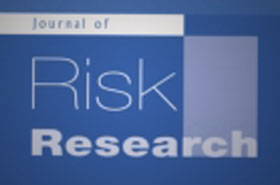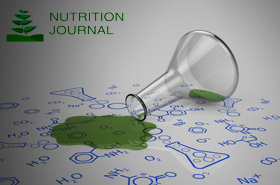All posts by Tuna Council
Environmental Working Group Seafood Report Is A Conspiracy Theory
The Environmental Working Group (EWG), long known for their fearmongering, is at it again, issuing a new report attacking official scientific advice from the U.S. government about the importance of eating seafood to optimize heart health and baby brain development. EWGs conspiratorial argument manages to attack the consensus of the United States Department of Agriculture (USDA), theInstitute of Medicine(IOM) and theFood and Agriculture Organizationof the United Nations working with the World Health Organization (FAO/WHO), that a fish-rich diet is not only safe and healthy, but essential for optimum health.
EWGs release of this report comes as no surprise the science is settled, USDA has updated its advice and now the only tactic EWG has left is to grasp at the most flimsy of straws in order to defend their anti-science views. Their desperate move is unsurprising, considering their past actions, including leaking a draft report from the FDA looking at the both the benefits and risk of eating seafood during pregnancy and for heart health, in an attempt to smear and taint the draft reports findings before the public could see it. Of particular concern is EWGs allegations about canned tuna, one of the most accessible and omega-3 rich fish available to American families. In their report, they write:
Americans eat more than 400 million pounds of canned imported tuna because it is affordable and can be stored for a long time. Canned tuna is the second most popular seafood in the U.S., after shrimp. An average American eats an average of 2.5 pounds of tuna every year (NOAA 2012).”
So far so good. Tuna IS an affordable food that yields a significant amount of Omega-3 fatty acids, which are linked to cardiovascular and brain health benefits. But after this first bit of helpful information, EWG jumps off the deep end.
Albacore tuna, also called white tuna, contains significant amounts of omega-3s, but tests indicate that it also contains significant amounts of mercury. Light tuna is usually skipjack tuna but can also contain yellowfin tuna. Skipjack and yellowfin have lower mercury levels than albacore, but fewer omega-3s.
The FDA/EPA fish advisory issued in 2004 said that pregnant women should limit their consumption of albacore tuna to six ounces weekly. However, EWG calculates that if a pregnant woman of light or average weight ate that much, she would exceed the EPA safe level. Children who ate a child-sized serving once a week would also exceed it.
How did they come to these calculations that contradict esteemed government agencies and public health groups? In part using the work of environmental activist Timothy Fitzgerald, who has previously admitted that he makes no effort to balance risks and benefits in his work, a highly unusual thing when giving out health advice.
EWG also fails to note that the EPA safe level for mercury is built with a 10-fold buffer. That means a pregnant woman would have to chronically exceed this level by 10 times to reach a level associated with any known risk, which explains why there has never been a case of mercury poisoning resulting from the normal consumption of commercial seafood documented in any peer-reviewed medical journals in the U.S.
Its no surprise then that a survey of Toxicologists revealed 79% think EWG overstates risks.
So, to help you sort out the EWG hyperbole, here are a few of the facts about seafood and your health:
Researchers at Harvard determined low seafood consumption is the second-biggest dietary contributor to preventable death in the U.S. The study found some 84,000 cardiac-related deaths could be prevented each year with a diet rich in seafood.
A long-term study showed that children whose moms cut back on seafood during pregnancy had significantly lower IQs. Those children missed out on key nutrients like Omega-3 fatty acids which every major health organization says are essential for healthy brain development.
Another long-term study also found a link between prenatal mercury exposure and improved intelligence at age 17 — likely because mercury in a pregnant womans blood signaled she was eating a lot of fish. The study, published in the journal NeuroToxicology, examined the people of the Seychelles Islands, who eat fish daily and have some of the worlds highest mercury levels — over 10 times that of samples in the United States. Researchers studied the children on the islands and found no consistent pattern of harm from prenatal mercury exposure. In fact, they found evidence of improved intelligence as prenatal mercury exposure increased. Why? Because mercury is a marker for fish consumption, which contains nutrients with long-lasting brain benefits, the researchers said.
Time and again fish lists have only proven to create alarm and confusion deterring American families from eating fish. This is particularly worrisome for a nation where pregnant women eat less than 2 ounces or half of a serving a week of seafood and American families eat less than 15 pounds of seafood a year compared to 70+ pounds of poultry, 100+ pounds of beef and over 600 pounds of dairy. Clearly Americans are not eating enough seafood to be healthy let alone get sick from naturally-occurring elements like mercury which is found in extremely diminutive amounts in all wild-caught fish.
Finally, while all fish may not be created equal when it comes to omega-3, the Dietary Guidelines for Americans recommends seafood choices include those with higher and lower amounts of eicosapentaenoic acid (EPA) and docosahexaenoic acid (DHA), but, some choices with higher amounts should be included. All fish are considered an optimum and healthy food choice because it is low in saturated fat and a good source of lean protein and other essential nutrients.
Over half of the seafood Americans eat is farmed fish and therefore not going to deplete the oceans any more than a farmer harvesting his corn is not going to deplete corn supplies. The majority of wild caught fish eaten in America is canned tuna and overseen by notable conservation groups including WWF and the International Seafood Sustainability Foundation.
While fearmongers like EWG continue to push their agenda, independent scientists, the IOM, the USDA and the FAO/WHO have all come to the conclusion that seafood consumption is, by far, a net positive and the real risk to Americans is not eating it. Scientists and health experts dont trust EWG methods and they reject their conclusions. The public should too.
Real Simple Makes It Real Complicated When It Comes to Eating Seafood
January 10, 2014
Dear Ms. Harris,
I was surprised and disappointed by the section regarding fish in your article How Much Is Too Much in the January, 2014 issue ofReal Simple. While author Sarah Copeland sets out to provide health benefits for your readers, her piece on fish creates more myths than it resolves misleading your readers in several ways.
Copeland writes that all fish are at risk of being tainted with mercury, citing an anonymous group of environmentalists for the assertion.In fact, the Food and Drug Administration hasstated thatfor most people, the risk from mercury by eating fish and shellfish is not a health concern and no peer-reviewed medical journal has ever published evidence of a case of mercury poisoning caused by the normal consumption of commercial seafood in the U.S. The USDAs Dietary Guidelines for Americans urges Americans to eat at least two fish meals a week.
Copeland also states that mercury exposure is linked with neurological and reproductive health problems. What Copeland does not tell her the readers is that these problems were the result of environmental disasters more than 50 years ago that neither resemble nor are applicable to how average American families eat seafood.
Copeland also incorrectly asserts that cold-water fish are safer sources that minimize toxins, and provides no evidence to back up her assertions. The fact is that all fish are subject to the same health and safety requirements.
Finally, Copeland inaccurately states that Albacore tuna should be avoided by pregnant or breast-feeding women. In fact, the USDAs Dietary Guidelines for Americans encourages pregnant and breastfeeding women toincreasethe amount of fish they are currently eating to at least two meals per week, to support healthy brain, eye, and spinal cord development for their children.False statementslike Copelands abovereinforce the serious seafood deficiency among pregnant women who eat less than half a serving (or 2 ounces) each week. Ultimately, it is their babies brain health that is suffering.
Only four, rarely eaten fish are suggested to avoid during pregnancy, and tuna is not one of them.Mercury in ocean fish is naturally-occurring in trace amounts and is the product of underwater volcanic activity. These miniscule amounts are simply not a concern for pregnant and breastfeeding women. For pregnant women eating fish from a local stream or pond, each state has local water advisories they can check. However, most American women eat fish purchased from their grocer.
As Copeland herself points out, fish are an important part of a healthy diet and health organizations, including the American Heart Association, concur. Real Simplequite simply got the story on fish wrong, unnecessarily turning seafood choices into a mine field and adding to the confusion of women who are, according to all the data, already seafood deficient thanks in large part to stories like this. Considering the material harm this could cause your readers, I would like to request an itemized list of corrections in next months magazine, and as a service to your readers, an online story affirming that fish is a primary source of omega-3s that experts agree Americans need to eat more of, especially during pregnancy. Please let me know what resources you need to get this corrected and please reach out to us when doing seafood related stories in the future.
Sincerely,
Mary Anne Hansan
Vice President, National Fisheries Institute
Rutgers Study Fails the Test
The Journal of Risk Research recently published a study from Rutgers University researchers entitled Sushi consumption rates and mercury levels in sushi: ethnic and demographic differences in exposure. The study warns that consumption of certain kinds of fish, including tuna, can lead to negative cardiovascular outcomes, purportedly due to methylmercurywhich occurs naturally in our oceans as a result of volcanic activity.
Unfortunately, the report is highly flawed on a number of fronts, and flies in the face of common sense, not to mention advice from governmental and health organizations, who stress we should be eating more fish to improve heart health. The American Heart Associations guidelines, for instance, include the recommendation to eat fish at least twice per week. The FDAs Dietary Guidelines for Americans echoes the recommendation to eat at least two to three servings (8-12 ounces) of fish per week. And research in the Journal of the American Medical Association specifically demonstrates that increased fish intake reduces the relative risk of coronary heart disease (CHD) death by 36 percent.
The real health crisis here is that Americans eat less than 15 pounds of fish a year, compared with more than 70 pounds of chicken, 100+ pounds of beef, and 600 pounds of dairy. Low consumption of the omega-3 fatty acids abundant in fish is the second-biggest dietary contributor to preventable deaths in the United States, taking a total of 84,000 lives each year. In fact, the FDA has suggested that 50,000 deaths from heart disease alone could be avoided through a diet rich in omega-3 fatty acids.
Put another way, the average American currently eats less than half of the weekly recommendation of seafood, and shoddy studies like this have the unfortunate effect of encouraging Americans to eat even less of it. Ostensibly in the name of public health, this sort of research will undoubtedly make the public less healthy.
Some of the most problematic aspects of the study:
- The studies authors looked at sushi consumption rates but did not record what kind of sushi (species of fish and quantity) respondents ate. Indeed, the researchers gave up on the task of making these distinctions because they found respondents were themselves confused about what kind of fish they were eating.
- The study therefore assume[s] that all meals are tuna sashimi (the dish with the highest measured mercury content) to compensate for ignor[ing] other fish intake in the study, meaning researchers essentially guessed at respondents fish consumption habits. The researchers go on to state that tuna sashimi they measured contained the most methylmercury of the samples they measured, and extrapolated from this purely hypothetical mercury levels in respondents. This is faulty analysis based on assumption, not evidence.
- The study relies on equally problematic research to support the claim that mercury may increase risk of cardiovascular disease (CVD). One infamous study cited by the Rutgers researchers looks at men from the Faroe Islands who eat high-mercury whale meatwhich is neither a fish nor a staple of the American diet. Much of that studys population had other, significant risks for CVD. On average, the participants were overweight or obese (BMI 27.4 +/- 3.2), and 58 percent were former or current smokers.
This last is perhaps the most troubling, becausethough the Rutgers study only briefly mentions CVD and relies on data that has no application to American dietsnearly all of the press mentions of the study highlight a purported link between mercury in sushi and CVD, leaving viewers and readers with a distorted and dangerous view of the facts.
But then, the studys authors themselves suggest that environmental activism, and not public health, is a prime motivation. In one passage, they write that although salmon is much lower in mercury than tuna, it should not be considered a substitute because farmed salmon entails other ecological problems. They then assert:
[I]t is important to point out that as fish consumption in general, and sushi consumption in particular are on the rise, the basic resource, the fish are not. Fish populations, even in the ocean, are being depleted. . . . Moreover, the growing appetite for sushi, particularly in Japan, has placed sushi-grade tuna species and particularly the Atlantic Bluefin Tuna in jeopardy. . . .
Is this a health study or environmental propaganda? The Rutgers study risks great harm in misguiding the public about the risks and benefits of eating fish. It would be worse still if its authors did so in the name of an environmentalist agenda.
The Dartmouth University Superfund[ers of Fearmongering]
The Dartmouth University Toxic Metals Superfund Research Program contains a section on mercury, which includes a short documentary video and a number of links to Information About Seafood and Nutrition. Unfortunately, the video does more to confuse the facts about the presence of naturally occurring organic mercury in our oceans than it does to clarify them, and the sources cited on the page are a whos who of seafood fear-mongers, long on ulterior agendas and short on nutritional expertise.
Consider Oceana, whose representatives are given ample air time in the video. Oceana is a self-described oceanic conservation organization, not a nutritional group. And yet, as their CEO Andrew Sharpless admitted, they have targeted naturally occurring mercury in seafood to amplify their agenda. People start to care more and understand the threat to the ocean, when you tell them their tuna fish is contaminated. Its a dramatic, eye-opening moment, Sharpless said. Its also a disingenuous moment. Oceana relies on unverifiable anecdotes to suggest that mercury poisoning is a real problem in the United States, a contention no peer reviewed scientific study has ever backed up. But all that matters to the group is that the public is frightened into paying heed to their agenda, no matter the nutritional repercussions.
The same goes for the Natural Resources Defense Fund (NRDC), a collection of activist trial attorneys and revolving-door government-officials-turned-lobbyists. Nutrition experts, these are not, and yet NRDC sees fit to offer a sustainable seafood guide which the Superfund site dutifully links to. Consumers beware. NRDC has a long history of getting science wrong or making it up and contributing to unnecessary and costly public health scares. They simply cant be trusted.
Or consider the The Gelfond Fund for Mercury Research & Outreach, which claims to not want to discourage people from eating seafood, but which, since its inception in 2009, has specialized in misleading propaganda that seems dead set on scaring people off of fish. The fund is named after millionaire Richard Gelfond, who bankrolled the operation with a $1 million donation, and who claims he suffered from a case of mercury poisoning as the result of eating seafood daily. Like other such claims, this sounds awfully strange in a world where citizens of nations like Japan eat far more fish per capita than Americans do, without suffering from any widespread negative health effects and a longer life expectancy. The Gelfond Funds advisory board, by the way, features no nutritional experts.
In fact, none of the groups linked on the Dartmouth site are primarily concerned with nutritionone group linked is actually an aquarium!and yet they are presented as experts.
So what do the real experts have to say about eating seafood? The latest official nutritional guidelines from the USDA recommend eating a wide variety of seafood, which is high in protein, low in saturated fat, and contains omega-3 fatty acids associated with improved cardiovascular health and fetal brain development. In fact, the USDA says Americans arent eating enough seafood, and recommend increase[ing] the amount and variety of seafood consumed to at least 8 or more ounces per week, up from about 3.5 ounces a week now, to get maximal cardiovascular benefits.
That advice applies to pregnant women who eat a paltry 1.89 ounces of seafood a weekas well. In fact, the World Health Organization and the Food and Agriculture organization of the United Nations stress that it is important to communicate to pregnant and breastfeeding women the risks of not eating seafood, a finding backed by multiple, peer-reviewed studies in publications like The Journal of Pediatrics and The Journal of Clinical Nutrition.
The Gelfond Fund for Mercury Research & Outreach
The Gelfond Fund for Mercury Research & Outreach claims to be “focused on providing information to the public and health professionals about how mercury gets into seafood and what the health effects can be from too much mercury. We do not want to discourage people from eating seafood.” Yet the fund’s website is packed with so much misleading hyperbole that it seems designed solely to scare people away from eating fish.
The site, for example, warns: “… (A)nyone who consumes large amounts of seafood or regularly eats fish high in mercury can experience negative health effects. Some health effects that have been seen with high mercury fish consumers include numbness or tingling around the mouth or in the arms and legs, ataxia or trouble with physical coordination like walking, cognitive effects such as difficulty thinking clearly, hair loss, stomach upset, and fatigue.”
Anyone reading that would assume our nation’s hospitals are packed with patients who enjoy seafood. Yet no peer-reviewed medical journal has ever published evidence of a case of mercury poisoning caused by the normal consumption of commercial seafood in the U.S.
In fact, studies show the enormous, long-term benefits of a seafood-rich diet far outweigh unproven concerns about methylmercury from the normal consumption of commercial seafood. The Advisory Council of the 2010 Dietary Guidelines for Americans is unequivocal in its findings: “…Consistent evidence shows that health benefits derived from the consumption of a variety of cooked seafood…outweigh the risks associated with methylmercury…even among women who may become or who are pregnant, nursing mothers, and children ages 12 and younger.”
The origin of the Gelfond Fund explains its distorted perspective on the safety of seafood. It was created with a $1 million donation from Richard Gelfond, the CEO of IMAX who claims he suffered from a case of mercury poisoning as the result of eating seafood daily. As pointed out here, that claim sounds awfully strange in a world where citizens of nations like Japan eat far more fish per capita than Americans and outlive us by years.
Yet you’d never know it from the Gelfond Fund’s website. It repeatedly exaggerates mercury concerns and recommends taking nutrition advice from other fearmongers like the Environmental Defense Fund, National Resources Defense Council, and The Mercury Policy Project.
In fact, the Fund ignores important peer-reviewed research that includes:
- Researchers at Harvard determined low seafood consumption is the second-biggest dietary contributor to preventable death in the U.S. The study found some 84,000 cardiac-related deaths could be prevented each year with a diet rich in seafood.
- A long-term study showed that children whose moms cut back on seafood during pregnancy had significantly lower IQs. Those children missed out on key nutrients like Omega-3 fatty acids – which every major health organization says are essential for healthy brain development.
- A study found a link between prenatal mercury exposure and improved intelligence at age 17 — likely because mercury in a pregnant woman’s blood signaled she was eating a lot of fish. The study, published in the journal NeuroToxicology, examined the people of the Seychelles Islands, who eat fish daily and have some of the world’s highest mercury levels — over 10 times that of samples in the United States. Researchers studied the children on the islands and found no consistent pattern of harm from prenatal mercury exposure. In fact, they found evidence of improved intelligence as prenatal mercury exposure increased. Why? “Because mercury is a marker for fish consumption, which contains nutrients with long-lasting brain benefits,” the researchers said.
The science is clear: A seafood-rich diet is good for everyone. The real threat to Americans’ health? Anyone who says otherwise.
Nutrition Journal Study Lacks Credibility
The online-only Nutrition Journal, one of 200 journals churned out by a British for-profit conglomerate, recently released a study on the consumption habits of pregnant women that baselessly and speciously concluded expecting mothers should avoid consuming whole categories of safe, reliable products, including seafood, canned food, and even tap water.
The report was authored by Kelly Huffman, who has a background in psychology, and includes contributions from a Ph. D. candidate and an undergraduate, none of whom have expertise in nutrition. The journals standards say they only publish peer-reviewed work, but when one peer reviewer with training in nutritional science expressed concerns about the studys unfounded conclusions, Nutrition Journal ignored them and published the report anyway.
The reviewer pointedly wrote that the psych-major and her coauthors make very general recommendations about what should and should not be consumed by pregnant women, which goes beyond the scope of the original data they present in the paper. Indeed, the reviewer writes that the main thrust of the report, essentially an opinion survey conducted on a small sample of women, could and should be presented as a separate paper, with only a very succinct, quantified summary of known, scientifically valid recommendations for pregnant women. But did the authors take this experts advice? Apparently not. In a comment on the revised draft, the peer reviewer stated flatly: The revisions do not adequately address the problems I raised in my original review.
The authors opining at length about prenatal nutrition, beyond the scope of their research, might not be so bad if they relied on the best science. But when it comes to fears over mercury in seafood and the net effect of seafood consumption on health the authors sources are shoddy.
They cite, for instance, Philippe Grandjean, whose 15-year-old study found elevated levels of mercury and neurological problems in children of the Faroe Islands. But the elevation was due in large part to the consumption of whale meat, which 1) is not eaten in the United States, 2) carries far higher concentrations of mercury than fish such as canned tuna, which are regularly eaten by Americans, and 3) doesn’t contain nearly as much mercury-mitigating selenium as fish like tuna. Take whale meat out of Grandjeans study and the data falls apart.
Similarly, the report cites the work of Jane Hightower, a physician who sees mercury poisoning as the culprit for just about every health problem conceivable. Hightower hasn’t published a single peer-reviewed article showing an association between seafood and mercury-related symptoms, and none of her work on the topic would hold up to rigorous scientific scrutiny. She also has ties to the ideologically driven Mercury Policy Project (MPP), made up of environmental extremists whose many factual shortcomings and distortions have been well documented.
Indeed, MPPs Edward Groth III, who also works for the fringy Gelfond Fund (bankrolled by a lone multi-millionaire with little more than a gut feeling that his sushi habit has impacted his health) makes his way into the citations as well. Not via a rigorous scientific study, mind you, but via a Consumer Reports buyers guide. This also happens to be Huffman and co.s most recent citation on mercury and seafood. You read that right. The authors latest source for clinical recommendations on prenatal nutrition comes from the folks who review vacuum cleaners.
Its no wonder a nutritionally literate peer-reviewer wanted the authors to dramatically scale back their very general recommendations and ensure that they were better rooted in good science.
But it is puzzling why Nutrition Journal saw fit to publish the specious study in spite of this reviewers unanswered concerns. Why did they let a trio of psychologists hold forth, freestyle, on a subject as important as prenatal nutrition?
The journal emphasizes its speed of publication, and even brags about publishing provisional versions of articles immediately upon acceptance, putting out finalized versions only later. So maybe we can hold out hope that Nutrition Journal is only provisionally giving credence to this slipshod study. Good science takes time.
New Study Debunks Any Link Between Eating Fish and Autism
A new report published in the scientific journal Epidemiology by researchers at the University of Rochester has found no relationship between eating fish during pregnancy and increased risk for autistic behavior in their children. The Seychelles Child Development Study drew from over 30 years of research examining the effects of methylmercurya naturally occurring organic compound found in the worlds oceans, and in trace amounts in seafoodin pregnant women who ate 12 meals of fish a week. The report adds to the long list of independent studies showing the developmental benefits for babies when their mothers eat fish regularly during pregnancy and serves as further proof against the fearmongers who continue to claim seafood consumptioneven in far more modest amountsis somehow dangerous especially for pregnant women and their unborn children. The federal governments Dietary Guidelines for Americans recommends expecting mothers eat no less than two servings a week. Currently pregnant women eat less than 2 ounces of seafood a week, or less than one serving.
The U.S. seafood recommendation is far lower than the average womans fish intake in the rest of the world, including the women who took part in the Rochester study, who ate 10 times the amount of seafood of the average American women and had 20 times the amount of methylmercury in their systems. In fact, the Rochester study found that the children of women with the largest concentrations of methylmercury actually had higher brain development scores, perhaps due in part to the overriding benefits of eating fish.
The study comes at an important time as the “11th International Conference on Mercury as a Global Pollutant is set to kickoff. Among the panels are discussions on Health Impacts from Mercury: Emerging science and unanswered questions, which involves examining the risks and benefits of eating seafooda non-issue for pregnant women, as the Rochester and countless other studies have shown.
So as environmental zealots use this platform to justify the righteousness of their clean environmental cause and scare pregnant women about eating or choosing their fish wisely, journalists covering the conference should ask themselves these questions:
1) Why should the public believe environmental extremists claims of theoretical harm over independent scientific studies showing that eating fish is both beneficial and necessary for pregnant women and their babies?
2) Why perpetuate fear that the amount of fish a pregnant women eats needs to be limited when according to FDA she eats less than 2 ounces a week on average, far below the government recommendation she eat 8 to 12 ounces?
3) Why complicate messages about the importance of eating fish during pregnancy with messages suggesting the species of fish she chooses is fraught with danger?
4) Are these groups ready to take responsibility for willfully promoting harmful advice that causes mothers to deprive their babies of essential nutrients found in fish and needed to build babies brains?
Instead of listening to a group of unqualified environmental zealots whos entire environmental agenda rests on creating fear among pregnant women about eating fish, and asking for money to do it, Americans should listen to research experts like those at the from the University of Rochester, and countless others, who continue to show us missing out on fish is the real harm.
What is Mark Bittman Hiding From?
For a person who makes his living as a writer, Mark Bittman has contracted an awfully convenient case of writers blockthat or he simply cant be bothered to respond to our letters. The New York Times food columnist recently penned a column offering disingenuous and harmful advice to the American public, suggesting that people limit the amount of tuna they eat based on thewhollynon-scientific advice of Dominique Browning, an environmental activist.
NFI brought a long list of concerns to the Times and its public editor, Margaret Sullivan including Bittmans failure to disclose Brownings ties to an activist environmental group, his false claims about the mercurys effects on infant health, and his ignorance of the fact that a lack of seafood consumption contributes to approximately 84,000 deaths in America every year, among many other items. These concerns were completely ignored. Even after the same concerns were raised by other outlets, Sullivan failed to address them choosing instead to write about such pressing concerns as Sesame Street and Kanye West.
When we reached out to Bittman directly, we asked a series of questions about his glaring omissions, and requested that he clarify or correct his dangerous advice.
He has so far remained silent.
Bittmans inactions suggests a lack of integrity, and readers would be wise to cast a skeptical eye on his future work. We invite the readers to take a look at our questions for Bittman and learn the truth about the health benefits of tuna.
Eco-Activists Manipulate NYT’s Mark Bittman
In 2008, the New York Times publicized a bogus study from an activist group testing mercury levels in sushi, prompting the papers public editor to admit the article was less balanced than it should have been, and required careful judgment and missed.
Five years later, the New York Times has stepped on the same rake again.
Times food writer Mark Bittman just penned a commentary piece
(Giving up Tuna? Beathing Is Next) that relies almost entirely on misinformation from well-funded activist groups like the Environmental Defense Funds Moms Clean Air Force. The result is a hodgepodge of errors and exaggerations that profoundly misleads readers.
Here are some of the many irresponsible errors and deceptions in Mr. Bittman’s piece:
Mr. Bittman states: If youre like most people (including me, up until a month or two ago), you know that tuna and other top-of-the-food-chain fish contain unsafe levels of mercury and that childbirth-age women and nursing mothers, especially, are warned off these fish.
That is false: The only types of fish the federal government instruct women to completely avoid during pregnancy and breastfeeding are shark, swordfish, king mackerel and tilefish. The 2010 Dietary Guidelines issued by the U.S. Department of Agriculture and U.S. Department of Health and Human Services recommend that pregnant women eat at least 8 and up to 12 ounces of seafood every week during pregnancy and breastfeeding. Unborn babies require their mothers to pass along the important nutrients in seafood for optimal brain and eye development.
In fact, research shows that children of women who consume the most omega-3-rich fish while pregnant score the highest on intelligence and motor-skills tests. One study from the National Institutes of Health found children whose mothers eat no fish during pregnancy are 29 percent more likely to have abnormally low IQs. Another study found a link between prenatal mercury exposure and improved intelligence at age 17 — likely because the mere presence of some mercury in a pregnant womans blood signaled she was eating plenty of fish.
Mr. Bittman states: Mercury itself, of course, is bad enough: Its a neurotoxin that attacks brain cells (watch this vivid, slightly retro and certainly scary enough video of how mercury produces brain damage) and, depending on dose, a variety of other symptoms (including, in extreme cases, death). Its worth noting that 200,000 babies are born in the United States each year with mercury levels high enough to cause concern about symptoms from lower I.Q. to reduced hearing, seeing and speech to impaired mobility and more.
What Mr. Bittman failed to mention: There are no cases of mercury toxicity from the normal consumption of commercial seafood found in any peer-reviewed published medical journal in this country. Toxic methylmercury exposure is extremely rare. Case studies on such exposures are based on extraordinary circumstances involving widespread, accidental industrial contamination. And, according to the CDC, “finding a measureable amount of mercury in blood or urine does not mean that levels of mercury cause an adverse effect.”
The irrefutable science demonstrates that Americans should be eating more seafood, not less. Regulators note you would have to eat seafood that contains mercury 10 times above the FDAs action level every day for the rest of your life to begin to even approach a level that would cause concern.
The problem with Mr. Bittmans commentary is not only that its erroneous and misleading, its harmful to Americans. Research shows articles like his can cause people to reduce the amount of seafood they eat, or eliminate it altogether. And that has a significant impact on the publics health.
A comprehensive study on seafood consumption, published in the Journal of the American Medical Association, found “avoidance of modest fish consumption due to confusion regarding risks and benefits could result in thousands of excess coronary heart disease deaths annually and suboptimal neurodevelopment in children.”
Authorities from across the globe including the World Health Organization, the Institute of Medicine, National Institutes of Health, and the Harvard School of Medicine all agree that the predominant risk associated with eating seafood is not eating enough of it. Researchers at Harvard determined low seafood consumption is the second-biggest dietary contributor to preventable death in the U.S. The study found some 84,000 cardiac-related deaths could be prevented each year with a diet rich in seafood.
As Dariush Mozaffarian of the Harvard School of Public Health concluded: Seafood is likely the single most important food one can consume for good health.
The North American diet already contains the second-lowest percentage of fish in the world 7 percent second only to the Sudan. Commentary like Mr. Bittmans simply makes a bad situation worse.
The New York Times should know better by now.
Moms Clean Air Force: A Threat to Public Health
The activist group Moms Clean Air Force (MCAF) is once again whipping up fears about seafood trying to scare parents as a way to push a political agenda. And, ironically, its children who will suffer for it.
In a column on thinkprogress.org, MCAF Senior Director and Co-Founder Dominique Browning claims that coal-fired plants are polluting the oceans and contaminating seafood with mercury.
Its actually an effort to persuade lawmakers to put new restrictions on utilities, and what better way to get attention than warning about a dinner table threat to Americas children? Its cynical but effective.
Its also not true.
Seafood and tuna, in particular — is one of the healthiest foods on earth. Seafood is rich in nutrients that help keep brains and hearts healthy throughout a person’s life and are essential for developing babies. A long-term federal study showed that children whose moms cut back on seafood during pregnancy are more likely to have abnormally low IQs.
What about mercury? Extensive research shows that the trace levels of mercury found in commercial seafood is largely naturally occurring and originates from underwater volcanoes. All fish in the ocean contain minute levels of mercury and have since the beginning of time. But its important to know that the 10 most popular fish Americans enjoy today including canned tuna — are low in mercury and fall well within the U.S. governments very conservative safety guidelines.
Yet youd never know it from Ms. Browning and her unfounded attacks on tuna (which infamously included the overwrought op-ed, A Worried Mother Does Better Research Than the FBI). Its not surprising that her organization is sponsored by the radical activist group Environmental Defense Fund. It, too, is well known for hyping mercury concerns to advance its political agenda and pick up extra contributions from worried environmentalists.












